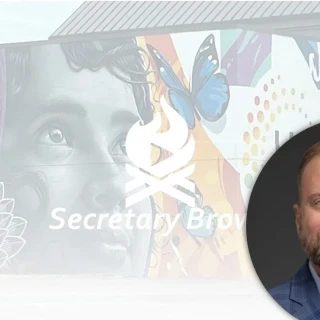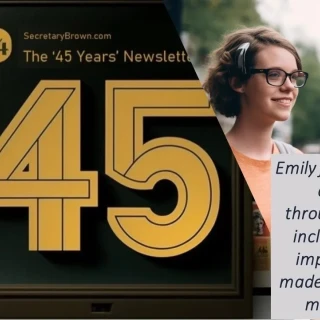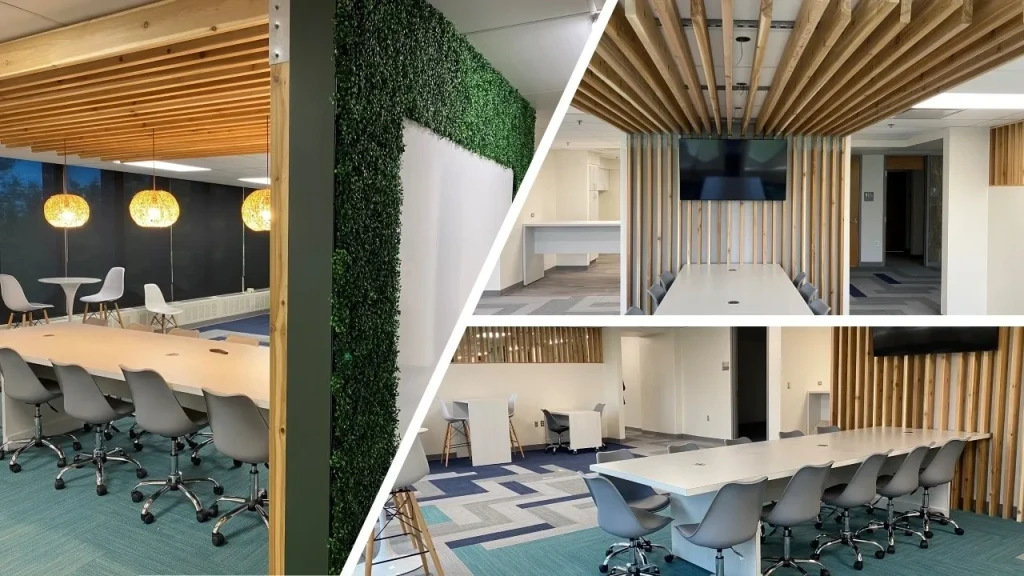'45 Years' Newsletter - Technology Leapfrogging

Thesis: Forty-five years represents my lifetime. It also represents a millennium of changes - some good, some bad - in the human services space. This newsletter asks the question, “Can we do human services better, so that in 45 years those that follow see us as forward-thinking change agents, not as those that squandered their opportunity to improve systems for children and families?”
Story:
All of my stories about the state of technology in human services end with the audience shaking their head and lifting their open hands raised to the sky in disbelief and letting out a partial sigh mixed with a helpless chuckle. By the way, it’s the same response I have myself as if to raise this issue as a form of sacrifice to the heavens as the only possible solution to the curse of the green screen that only the mercy of God can now break.
One of my favorite stories involves the remodel of the state office building for the Oklahoma Department of Human Services in Oklahoma City. Shortly following the immediate transition to remote work of 6,000 employees in March 2020, it was clear that the state of work was going to change for a generation. We dove deeper into our embedded worker program as an opportunity to build a more ‘proximate’ distribution model for human services in an effort to meet the people we serve ‘where they are’ instead of requiring them to fall to a level of despair to reach out to us for help. As a part of this strategy, we decided to close three administrative buildings by the state capitol and consolidated about 1,200 employee duty stations to the primary state office building. To recognize the financial savings, a remodel of the state office building, while the team was remote working, was required to accommodate twice the employees, an easy spend as it would have about a 50% annual return on investment.
After replacing carpet, updating wireless routers, installing more efficient cubicles and painting walls, the construction team began installing business machines like printers and copiers back into their spaces. The building looked wonderful! We now have a space in which people enjoy coming to work, that allows for true collaboration and team building, and this physical transformation has allowed our team to be even more proud of working for the state’s largest agency. Now, across State of Oklahoma, more spaces are being transformed similarly to give thousand of OKDHS employees with the same level of pride.
The transition into this incredible space was clunky, but not for the reasons that many would expect. Upon repopulating the building, the finance team began their usually monthly payroll processes, utilizing the ‘AS400’ technology that they had grown accustomed to since the late 1970s. The familiar green glow of the monitors and decades of training on navigating hundreds of screens utilizing four letter screen codes (because the technology was designed before the computer mouse was invented) was comfortable to many. After verifying the timesheets and managing the usual processes, the team hit ‘send’ on payroll, just like they had done countless times before and… nothing happened… and no one could figure out why…
Continued below…
Three Bullets:
Most of government across the nation operates with decades old and intentionally rigid technology that does not allow for meaningful modernization of processes to a more human centered approach.
The bureaucracy of government prevents agencies from updating to a much more efficient set of tools.
Implementation of modern technology in government can give a committed workforce the tools they need to truly solve problems for families and do the big things that we all know are possible.
Lessons Learned:
All levels of Government has a history of falling behind in implementation of new technologies, evidenced by countless stories of green screens currently in use.
We are approaching another major technology atom bomb, and I believe that government can leapfrog decades of technology deficit with the newest technology currently becoming socialized (think Generative AI, aka ‘ChatGPT’).
Government doesn’t leapfrog well, especially in technology, but there is a new generation of leaders in human services that should lead the way in embracing technology like Generative AI for good, instead of fearing its risks to the point of paralysis.
True North Principle(s):
We must:
Get aggressive, operating with urgency, to overcome technology deficit in human services.
Embrace new technology immediately so we don’t lose another forty five years to COBAL.
Equip and empower our workforce to move from transactions to relationships to make meaningful progress in the fight against poverty as the leading cause of poor outcomes in America.
The End of the Story:
To say the least, it was alarming when the team hit ‘send’ on their usual monthly payroll process and nothing happened. After a couple of days of intense trouble shooting, it was finally determined that buried deep within the green screen labyrinth of the AS400, was a strict rule, hard coded in the COBAL finance system that required a specific printer to be plugged into a specific wall outlet, and during the remodel of the building that printer had been plugged into a different, yet nearby outlet. Because a printer had moved to the other side of the room, more than 6,000 people were at risk of not receiving a paycheck on time!
Fortunately, the finance team is one of the best in the business, and their foresight and preparation allowed for time to troubleshoot the issue with sufficient margin to get payroll done, and the thousands of heroes that work in human services in Oklahoma were paid without disruption that month. In the years that followed, OKDHS has been successful in modernizing their finance technology to a contemporary solution that doesn’t require a specific printer to be plugged into a specific outlet, however I use this story regularly to illustrate to the public the incredible deficit of technology that exists in government.
I have reason to be very hopeful in the modernization efforts in process now across the board, both in Oklahoma and nationally, but many of the systems that operate government are older than I am. This represents both an incredible risk, but also an inspiring opportunity. If we can get this right, I believe that contemporary technology married with the most dedicated and compassionate workforce in our nation can truly change the world.



